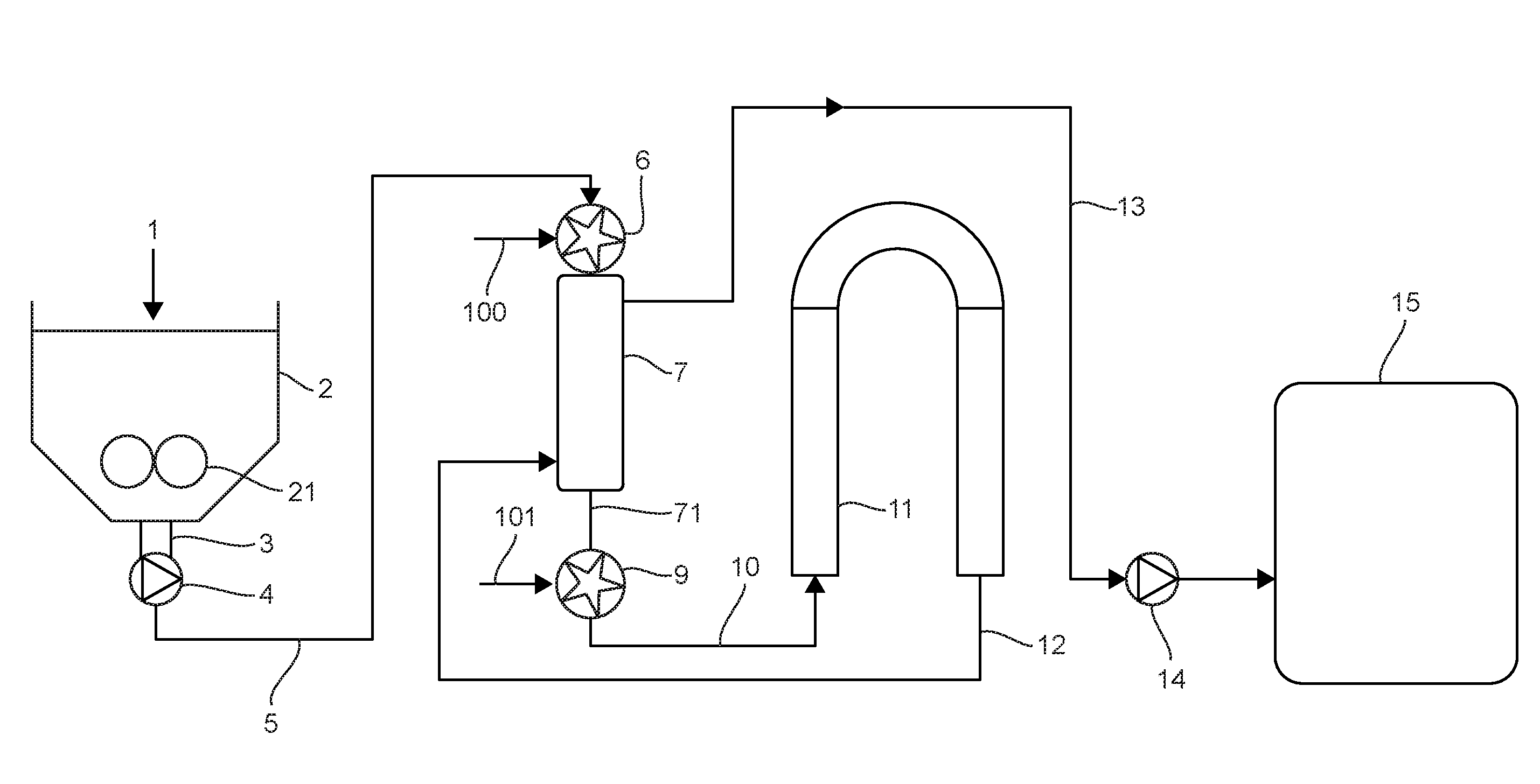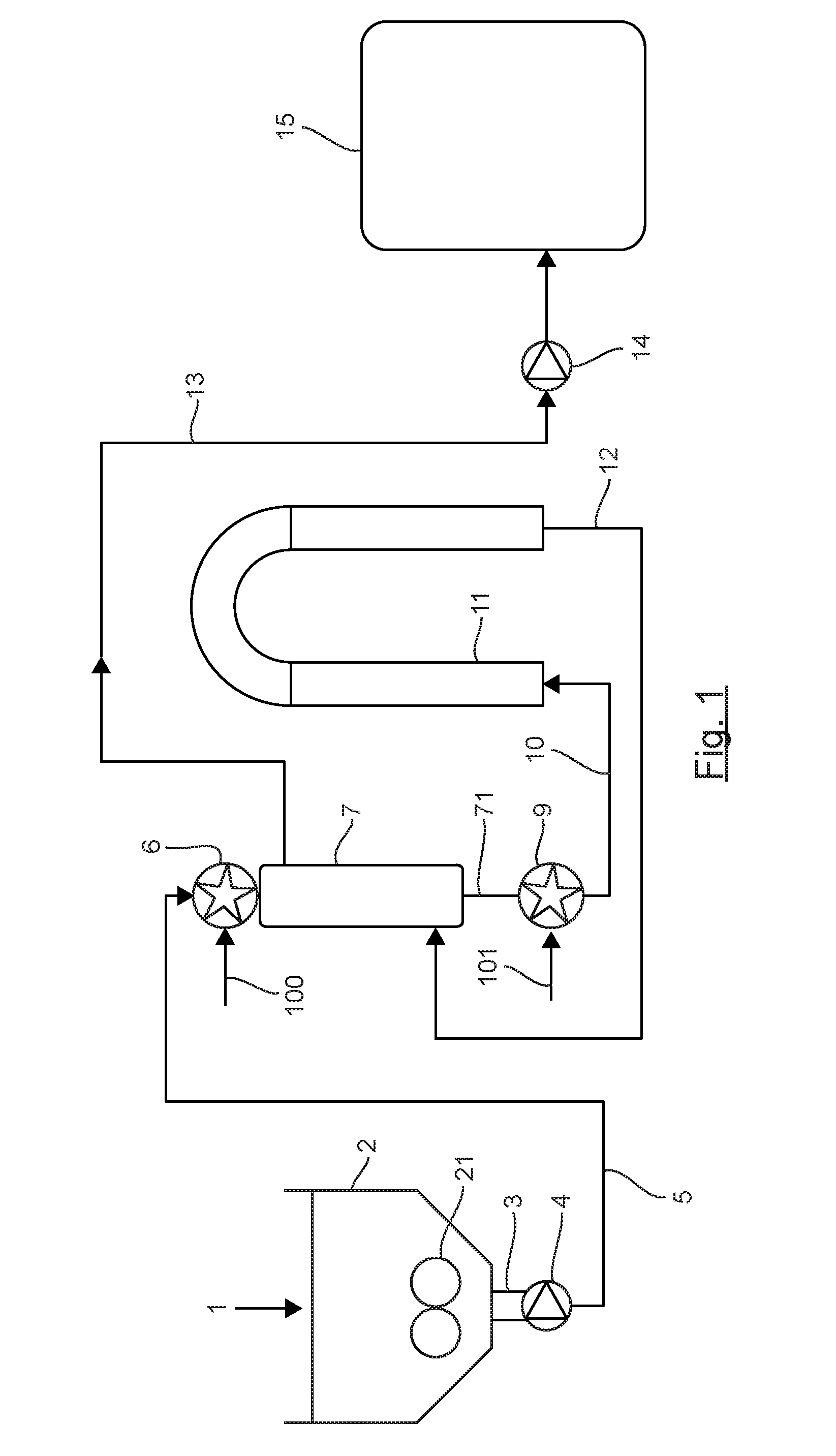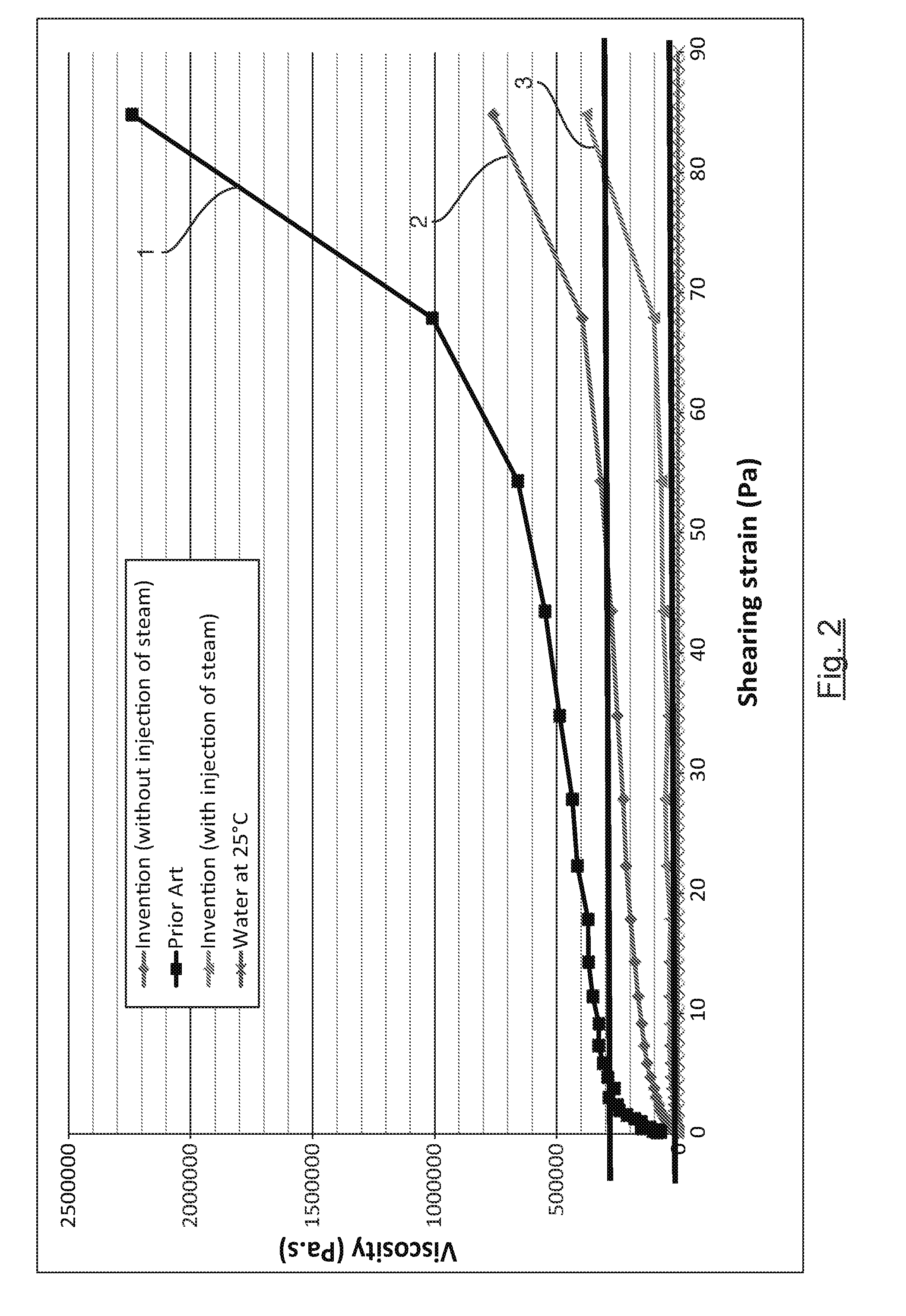Method for the continuous thermal hydrolysis of sludge with a high dryness value
a technology of thermal hydrolysis and sludge, which is applied in the direction of water/sludge/sewage treatment, water treatment pressure conditions, specific water treatment objectives, etc., can solve the problems of low potential energy recovery potential of the mode of operation, poor degradability of certain organic compounds by biological means, premature wear and tear, etc., to reduce the viscosity of de-structured sludge and save energy implementing to make the rotor operate.
- Summary
- Abstract
- Description
- Claims
- Application Information
AI Technical Summary
Benefits of technology
Problems solved by technology
Method used
Image
Examples
Embodiment Construction
[0056]The general principle of the invention relies on the implementing of a step for the de-structuring of the sludge followed by a step for heating the sludge in a heat exchanger, upstream to a method of thermal hydrolysis. The step for de-structuring the sludge is done by subjecting the sludge to a high-speed gradient, enabling its structure to be broken, possibly accompanied by pre-heating through the injection of steam. The sludge thus de-structured and possibly heated can enter the heat exchanger where it will be heated through the recovery of heat from the hydrolyzed sludge. The heating of the de-structured sludge, whether pre-heated or not, reduces its viscosity thus enabling the sludge to be made to circulate in the heat exchanger while considerably reducing or even totally eliminating the pressure losses within the exchanger. The sludge thus de-structured flows more easily within the heat exchangers, and the pressure losses are considerably reduced. In addition, the exchan...
PUM
 Login to View More
Login to View More Abstract
Description
Claims
Application Information
 Login to View More
Login to View More - R&D
- Intellectual Property
- Life Sciences
- Materials
- Tech Scout
- Unparalleled Data Quality
- Higher Quality Content
- 60% Fewer Hallucinations
Browse by: Latest US Patents, China's latest patents, Technical Efficacy Thesaurus, Application Domain, Technology Topic, Popular Technical Reports.
© 2025 PatSnap. All rights reserved.Legal|Privacy policy|Modern Slavery Act Transparency Statement|Sitemap|About US| Contact US: help@patsnap.com



